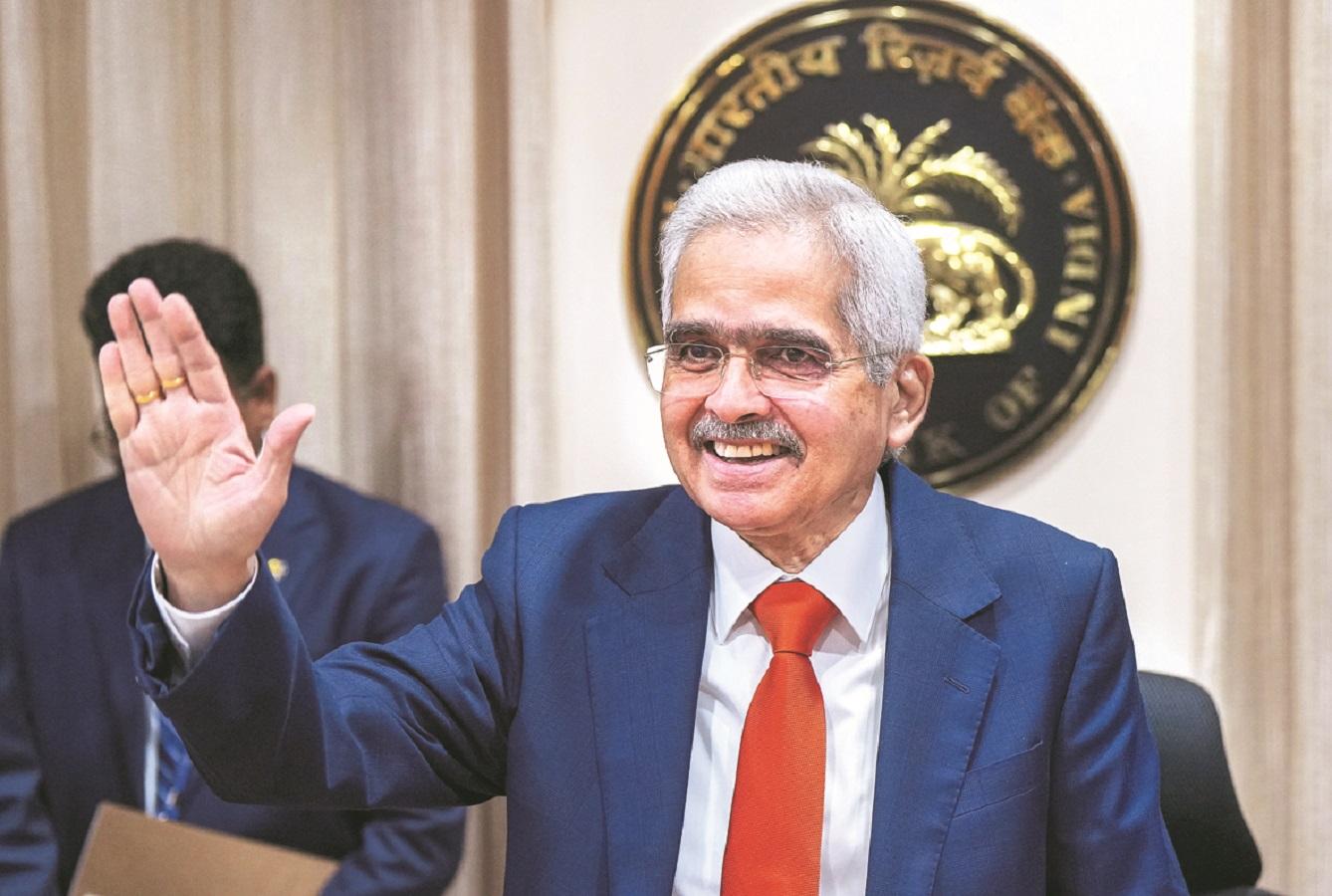[ad_1]
The six-member Monetary Policy Committee of the Reserve Bank of India (RBI) on Friday decided to keep the policy repo rate unchanged at 6.5 per cent for the fifth straight review meeting, as well as the withdrawal of accommodation stance, while stopping short of clearly communicating that the rate cycle had peaked.
One of the key highlights of this no-action policy was the sharp revision of the FY24 GDP growth rate, which is now projected at 7 per cent as compared to 6.5 per cent earlier.
The inflation projection for FY24 has been retained at 5.4 per cent, with a word of caution for the November and December prints.
While emphasising that the monetary policy must continue to be actively disinflationary, RBI Governor Shaktikanta Das said: “Policy makers have to be mindful of the risk of being carried away by a few months of good data or by the fact that CPI (consumer price index) inflation has come within the target range. They have to be also mindful of the risks of overt-tightening, especially when large structural changes and shifts, geopolitical and geoeconomic, are taking place.”
Das, however, said over-tightening should not be interpreted as an imminent change in the RBI’s approach.
While acknowledging that monetary policy had made significant progress in bringing down the inflation rate below 5 per cent in October, Das said the summer of 2022, when headline inflation breached the upper tolerance band of 6 per cent on successive occasions, was behind.
“We have now reached a stage when every action has to be thought through even more carefully to ensure overall macroeconomic and financial stability; more so, because the conditions ahead could be fickle. We have to remain vigilant and ready to act, (in accordance with) the evolving outlook,” he said.
Stating that the future was expected to be clouded by uncertain food prices and the CPI rate for November was anticipated to be high, Das said inflation management could not be on auto-pilot.

“No new action from the RBI against the backdrop of a larger-than-expected upward growth revision could be interpreted as being slightly dovish on the margin,” said Kaushik Das, India chief economist, Deutsche Bank.
“Also, for the first time in the current rate-tightening cycle, the RBI highlighted the potential risks of over-tightening. This does not mean that the RBI is ready to cut rates anytime soon, but it probably marks a small pivot to the one-sided narrative of needing to keep rates higher for longer,” he added.
A report from Nomura said if inflation moderated closer towards 4 per cent in FY25 and growth disappointed below the RBI’s robust outlook of 6.5 per cent, the central bank would then have to reassess the need for such high real rates.
“We stick to our view that the RBI will deliver 100bp of cumulative rate cuts starting in August, with risks skewed towards earlier cuts,” the report said.
Das said growth remained resilient and robust, surprising everyone on the upside. Q2 GDP growth, which was 7.6 per cent, was much higher than the central bank’s projection of 6.5 per cent.
“The upward revision in GDP forecast to 7 per cent (SBI at 7 per cent) for FY24 looks optimistic and reasonable and is likely to be overshot,” Soumya Kanti Ghosh, group chief economic adviser, State Bank of India, on the revision of FY24 growth forecast to 7 per cent.
On the tight liquidity conditions, the RBI said it was mainly due to higher currency leakage during the festival season, government cash balances and the central bank’s market operations.
“Driven by these autonomous factors, system liquidity tightened significantly compared to what was envisaged in the October policy statement. Consequently, the need to undertake auction of OMO sales has not arisen so far,” Das said.
The RBI said government spending was likely to further ease liquidity conditions and said it would remain nimble in liquidity management.
[ad_2]

